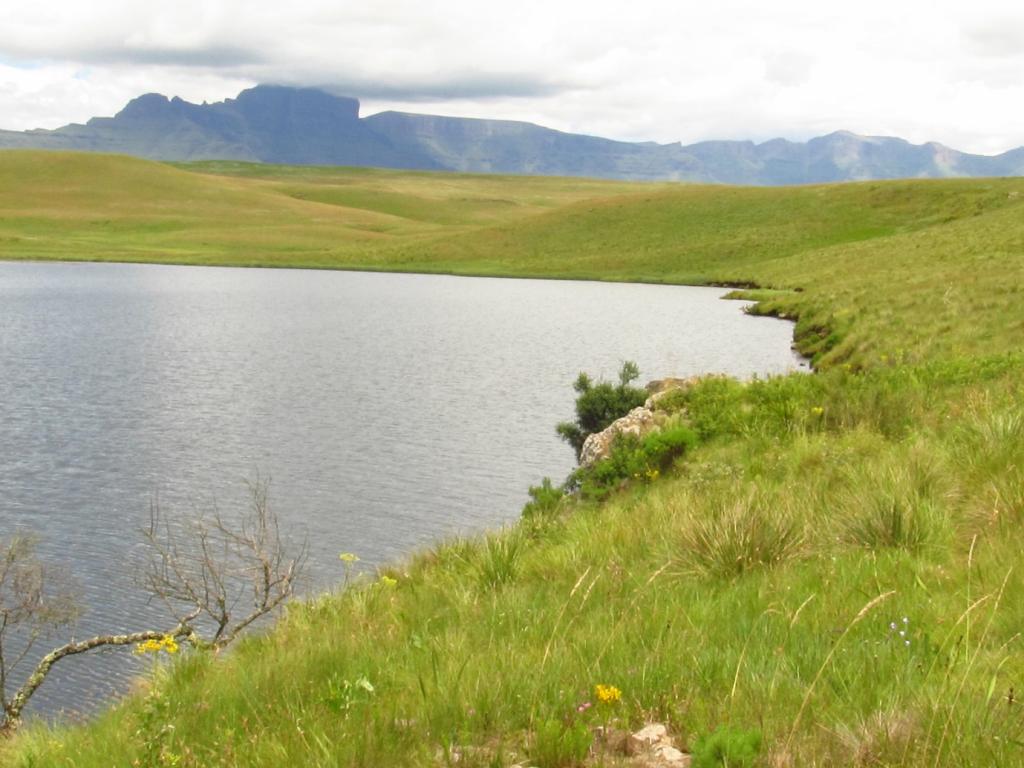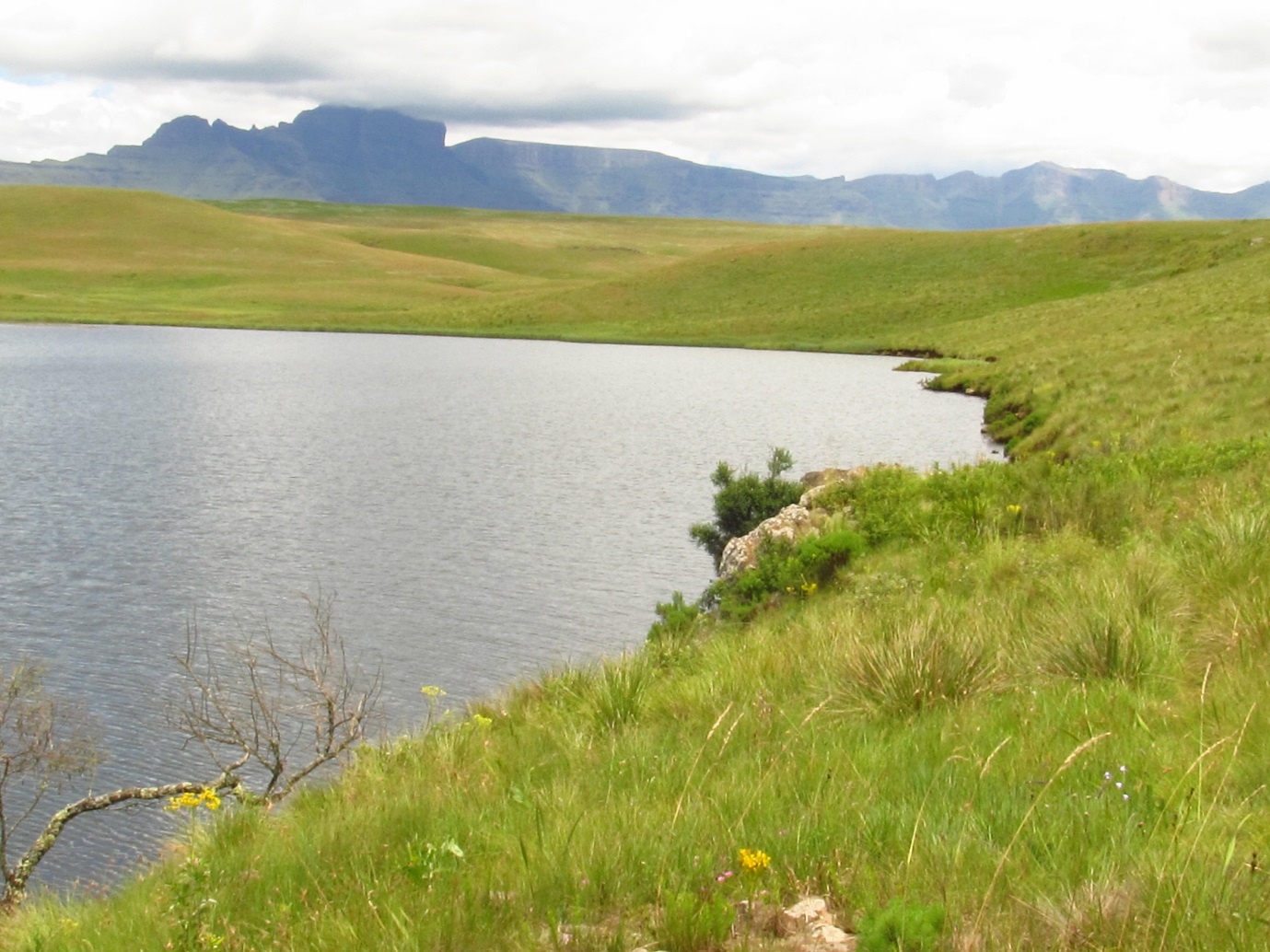From the berg to the savanna – a modern survey of wetland environments


At the Kamsloop dam in the Highmoor Nature Reserve, Drakensberg (Photo A. Dabengwa)
The art of reconstructing past environments from sediments involves some understanding of extant (present day) processes. This prompted the recent environmental survey of wetlands in the Drakensberg and Hluhluwe-iMFolozi Park (HIP). The sites covered the grassland and savanna biomes and are in areas where much archaeological work has been conducted on the movement and settlement patterns of humans.
The adventure kicked off on the 9th of January when Lindsey Gillson (Deputy Director of the PCU) and I landed in Durban, fetched our reliable steed, the Toyota Hilux bakkie and then headed out to Howick to get supplies and equipment. We then set off to Kamberg Nature Reserve, a beautiful gem in the southern Drakensberg. There, we honed our skills on the line point intercept method and began collecting data on plant growth forms, grass biomass, dung abundance and tree density. This fitness program involved lots of driving, hiking, and observation. We also worked at Highmoor Nature Reserve and Umgeni Nature Reserve.
The last leg of the trip was a dash north-east to HIP, the savanna gradient where we repeated the sampling protocol. Herbivores and tree-grass dynamics are a huge component of the work I am engaged with and HIP has many combinations of these. We met the other half of the team and soon conducted species level surveys of transects radiating from wetlands, in full view of the local fauna. The black and white rhinos were quite curious but allowed us to work nonetheless. We completed the work on the 16th of January. In all, we collected information that can be useful for linking extant environmental processes at ± 400m scales for use in palaeoecological analysis - for correlative models and hopefully predictive models.
Article by A. Dabengwa
